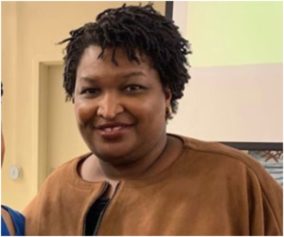Black Lives Matter, Part I
Almost 100 years ago, the Harlem intellectual Hubert Harrison celebrated Black resistance to racialized violence in the essay “As the Current Flows.” He described it as making white mobs take “their own medicine” as Blacks fought back against vigilante groups in urban centers at the height of the Red Scare. The “New Negro spirit” or militancy, he believed, represented a fait accompli in American politics, or a permanent mode of Black defiance against an oppressive system and its Black accommodationist leadership.
The protests surrounding the police killings of Michael Brown, Eric Garner and others raise the question of whether they will be this generation’s fait accompli. The Black Lives Matter movement can potentially reshape the national dialogue around race, class and the criminal justice system. It can also deepen the commitment of young and older grassroots leaders to racial justice and participatory democracy. Though young Blacks make up a large number of the participants in the protests, the movement has further galvanized a large contingent of non-Blacks such that it may lead to a new kind of rainbow coalition.
Almost 20 years ago, I lived in a San Francisco neighborhood that experienced its own police killing of an unarmed Black man named William Hankston. Residents were especially outraged that it occurred near a daycare center where two dozen school-age children witnessed the incident. The killing ignited minor scrapes between Black youth and the police. Yet after the anger subsided, the protests stopped as the victim’s family and the police department began a legal battle that lasted several years.
My front-row seat at the Hankston incident shaped my immediate response to the protests in the aftermath of the Michael Brown shooting. I thought the protests would end or be corralled by Black leaders and that the protesters would eventually go home. I was wrong. Instead of diminished protests, they continue to spread throughout the country, including in places as dissimilar as New York and Alaska, as well as dozens of cities outside the United States.
By all accounts, activists and communities at the forefront of the Black Lives Matter movement have a policy window or political opportunity to advance serious reforms of a broken criminal justice system, and to connect these reforms to economic justice policies that can improve the lives of the working poor. There is already evidence that the resistance has made a difference. Moderate racial profiling measures are currently being debated in state and local legislative bodies. Congress just approved the Death in Custody Reporting Act, and the Justice Department announced new rules to reduce racial profiling by federal law enforcement officials.
Yet despite the incredible courage and youthful energy of the protesters, it is unclear if these protests will lead to life-altering improvements for working-class communities beyond the moderate reforms that were just approved.
Black Lives Matter activists are up against entrepreneurial police commissioners who have different management styles than earlier police chiefs such as the Bull Connors, Frank Rizzos, and William Parkers who ran big-city police departments from the 1930s to 1970s. Whereas the latter group publicly championed jackboot, racialized policing strategies, most of today’s big-city police superintendents (and district attorneys) have perfected the art of political stagecraft and are particularly skilled at building allies in the Black community. These officials, working hand-in-hand with powerful economic interests, have built in most cities a “cradle to prison” regime — biracial or multiracial governing coalitions skilled at moderating racial discord in the aftermath of incidents involving police misconduct.
We don’t have a definitive answer as to what makes movements such as Black Lives Matter a fait accompli or a permanent mode of resistance. What distinguishes movements and youth-based insurgencies that foment transformative change from those that are contained has puzzled movement activists and scholars more than many of us would like to admit. Yet young activists should pay attention to some signposts as they attempt to sustain the Black Lives Matter movement in 2015.
Intergenerational Activism
Although the recent groundswell of activism has its own unique character and historical roots, it is part of a long tradition of youth militancy that dates back nearly a century. In the 1920s, Black college students revolted against the oligarchic leadership that presided over historically Black colleges and universities. A decade later, the Southern Negro Youth Congress, a radical youth formation that attracted young activists such as James Jackson and Sallye Davis (Angela Davis’ mother), organized young people in support of economic justice and voting rights initiatives.
The 1950s and 1960s gave birth to the Youth Marches for Integrated Schools; the sit-in movement of 1960 that attracted more than 50,000 young protesters; and the Student Nonviolent Coordinating Committee, or SNCC, as well as the Student Organization for Black Unity.
Young activists helped to propel the Pan-African and Black feminist movements of the 1970s as well as the South African divestment movement of the 1980s. And the Black Student Leadership Network set up dozens of freedom schools in low-income communities during the early to mid-1990s.
Despite these earlier movements and others not mentioned, we still have a lot to learn about Black youth agency. Many older Black activists believe that the strength and dynamism of Black and multiracial movements in the 1960s have been under-researched or inaccurately reported. Some activists even believe that the overall framing of Black youth agency — and the media’s obsessive attention to the divisions between adults and the youth — was initially framed by academicians whose experiences and research were shaped by white-led and western European student movements. Some believe assessments of white student activism were mistakenly reinterpreted or misappropriated to evaluate Black youth agency. Whether true or not, the limited research on Black social and political agency has inhibited the academic and activist communities from challenging common assumptions about youth activism.
Also frustrating is the media’s focus on adult/youth divisions within the Black activist community in its portrayal of the Black Lives Matter protests. This attention has been partially fueled by young protesters themselves. Corporate and even the most movement-friendly media have little understanding of grassroots organizing, how protests are planned, and the actual science or strategic planning that goes into sustaining movement campaigns. The adult-versus-youth narrative, which is quite predictable and unsettling, thus takes away from deeper stories about the brilliance and tactical innovation of the young Black Lives Matter organizers.
Certainly, generational divisions permeate all protest waves. They did in the 1930s, almost a forgotten period of Black youth radicalism, and they were pervasive in the 1950s to 1970s civil rights and Black power movements. However, the intergenerational dimension of these movements is actually a testament to the vitality of Black political agency. The cohesion between young activists and long-standing community leaders, many of whom are unrecognized and barely mentioned in movement media portraits, is certainly more fascinating than the clashes between young radicals and the Black establishment.
Take for example the dominant narrative in movement circles about generational divisions between SNCC and Martin Luther King Jr.’s Southern Christian Leadership Conference. SNCC may have been the most important youth-based movement organization of the 20th century. Its intimate relationships with older, indigenous activists or what Charles Payne calls “local people” was more reflective of its organizing philosophy than its battles with the SCLC. Herbert Lee, Amzie Moore, Fannie Lou Hamer, Aaron Henry, and Gloria Richardson were older leaders who joined or allied with SNCC.
On the other hand, a network of young activists bolstered some of the SCLC’s militant action. James Orange joined SCLC in his late teens, and was one of the unsung heroes of the Selma voting rights campaign despite being younger than most SNCC members. (The Selma movie inaccurately portrays Orange as the same age as other SCLC staff members, but he was actually in his early twenties at the time and younger than SNCC chairperson John Lewis.) Diane Nash and Bernard Lafayette, both young organizers in the Nashville civil rights movement and the freedom rides, traversed between SNCC and the SCLC. The SCLC also coordinated Septima Clark’s Citizenship Schools after the collapse of the Highlander Folk School. The Citizenship Schools mirrored SNCC’s freedom schools and surely were championed by young activists who were critical of the SCLC and adult leadership.
Indeed, many young activists have no problem working in intergenerational movement infrastructures as long as seasoned or older activists respect their voice and autonomy. Young organizers also need older activists to leverage their resources and expertise to prolong militant youth action. What young people oppose is the doctrinaire and seemingly anti-democratic wing of the Black leadership class. Even Ella Baker’s critique of the SCLC and adult leadership, as recounted in Barbara Ransby’s groundbreaking book, “Ella Baker and the Black Freedom Movement,” was less about generational divisions than the class orientations and bureaucratic inertia of the mainline civil rights groups.
For the purposes of the Black Lives Matter protests, the most useful example from Baker’s life may be how she used her position in the SCLC and her close ties with other social justice groups to develop an alliance of student and youth activists. Many activists are familiar with the story of SNCC. It was formed at the tail end of the 1960’s sit-in movement that targeted racially segregated, public accommodations. After the sit-ins, Baker pulled together young activists for a national gathering at Shaw University in Raleigh, North Carolina, in what became SNCC’s founding conference.
Dr. Sekou Franklin is an Associate Professor in the Department of Political Science at Middle Tennessee State University (MTSU) and is the Coordinator of Urban Studies Minor Program at MTSU. He has published works on race and political opinion, urban politics, social movements and community organizing, juvenile justice, civil rights, the death penalty, youth activism, Venezuelan politics, and state and local politics. He is the author of “After the Rebellion: Black Youth, Social Movement Activism and the Post-Civil Rights Generation” (NYU Press, 2014) and has also served on the National Conference of Black Political Scientists’ Executive Committee.


